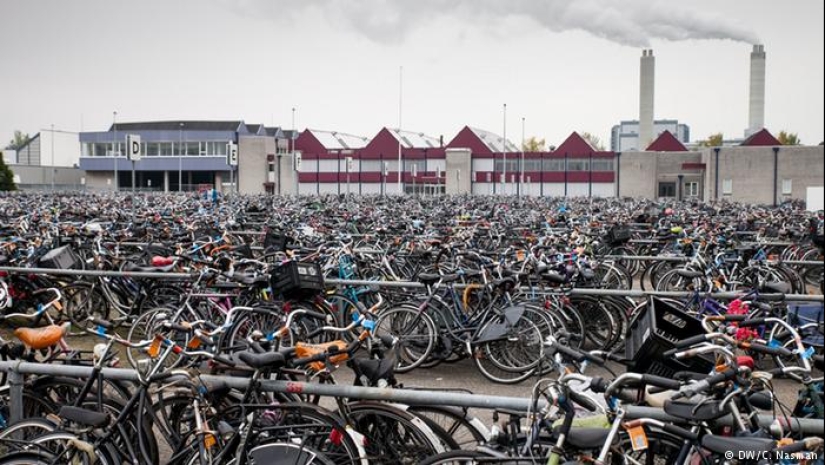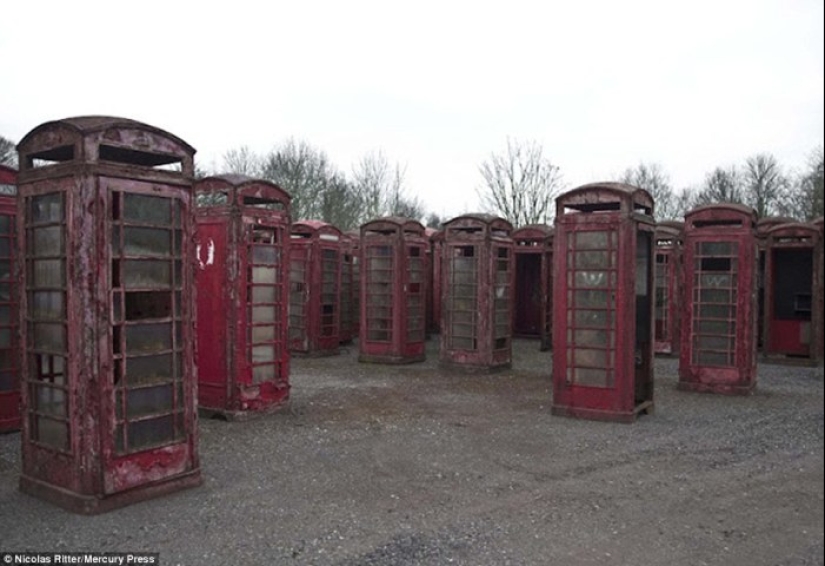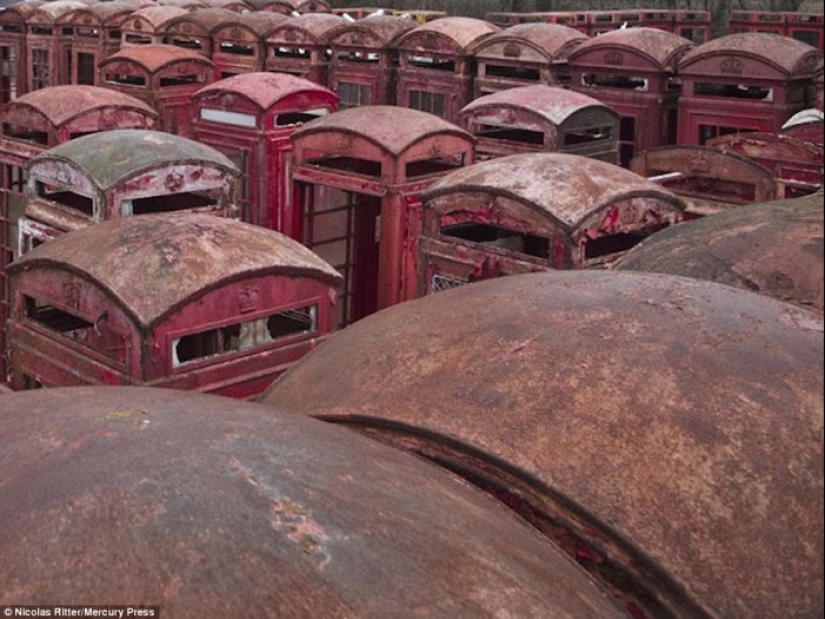8 tech cemeteries of terrifying proportions
People are not the only ones who find their last resting place: cars and various equipment, having served their time, also go somewhere, and this is not always recycling. That's how unusual cemeteries appeared in different parts of the world — telephone booths, car tires and other items.


Now rarely where you will find a payphone, but sometimes they still come across. Especially if we are talking about special cemeteries. For example, in the UK, two special landfills were arranged, where the world-famous red telephone booths are taken. The owner of one of the cemeteries is 80-year-old Mike Shores. All his life, the man collected failed payphones, and as a result, he accumulated several hundred of them. Then he decided to update them and paint them red.

But the largest active payphone cemetery is owned by Unicorn Restorations and is located in Surrey. Anyone can buy a restored telephone booth here for 2 thousand pounds.
Where did the cars of the world's oldest metro, which have served their time, go? It turns out that at one time these cars were dumped into the sea. When the New York City subway decommissioned 2,500 cars, they dismantled the seats, wheels, and everything that could be removed. Some of it was recycled, and the rest was sold. The frames of these wagons were taken by barge to the Atlantic Ocean and dumped into the sea to create an artificial underwater reef. This New York City Transportation Authority project was completed in 2010.
In the state of New Jersey, there is a special cemetery where dismantled toll booths are taken on toll highways. Before taking the booths to the landfill, they are dismantled from windows, air conditioners, and stainless steel doors. Here is a story about this unusual cemetery:
Even the neon signs have their own official graveyard. It opened in Las Vegas in 1996. Its area is 1.2 hectares. The signs of wedding chapels, parking lots, famous casinos and other popular places in Las Vegas found their last refuge here. By the way, now you can even buy a ticket and go to this unusual dump on a tour.
About 150 kilometers northeast of Los Angeles is the city of Victorville, and there is a cemetery, where almost every commercial aircraft in the United States has flown its clock.
The former George Air Force Base, which later became Logistics Airport, is one of the largest and most famous burial grounds for civilian aircraft. When an aircraft turns 20, it is either written off or sold to other airlines after repairs. Some aircraft are disassembled for spare parts. There are only three airplane cemeteries in the United States, but Victorville is the most popular, as the local dry climate makes it easier to preserve winged aircraft.
In Kuwait City, there is the Sulabiya district, dotted with giant holes in the ground where old car tires are dumped. According to some sources, at least seven million tires are already buried here. This technoclades is so huge that it can be seen even from space. Car tires from all over the world come here: other countries pay Kuwait to bury their tires here. Obviously, this is not the best place from the point of view of ecology. Especially since in 2012, for example, a tire dump near Jahra caught fire. More than 5 million tires exuded toxic smoke, and firefighters barely managed to curb the flames.
This place is called Fietsdepot, it is located in Amsterdam and is more of a penalty parking lot, rather than a bicycle dump. However, this includes abandoned bicycles that the police discover in the city. According to some estimates, the inhabitants of the capital of the Netherlands have about one million bicycles. Official bicycle parking lots are always packed, and there are often illegal two-wheeled friends parked on the streets. They are constantly being hijacked, and this is another problem.
During the year, Fietsdepot receives approximately 65 thousand bicycles of all sizes and colors. Each of them is entered in a special database, where the model, color, identification marks, serial numbers are indicated, after which the information is checked by the police to make sure that the unattended bike is not stolen. Bicycles stay here for three months, and 40% of people end up getting their two-wheeled vehicles back. Bicycles that no one has come to collect are sold at auction, disassembled for spare parts, or sold for scrap.
For many decades, a whole armada of bulky warships lay in the harbor of Saisan and was one of the popular and unusual attractions for tourists who came to San Francisco. After World War II, the U.S. Maritime Administration created the so-called Saisan Harbor Reserve Fleet, which was also called the mothballed Fleet or Ghost Fleet.
According to the idea, these ships were supposed to be a potential reserve for national defense in the event of an attack. At some point, the number of ships standing here reached 100 units. But in 2007, the ghost fleet disappeared: after a long legal process, environmentalists managed to have the unclaimed ships transported to the Mare Island shipyards and to Brownsville, where they were dismantled and sent for scrapping.
Keywords: Ecology | Landfill | Garbage | Waste | Cemeteries | Machinery
